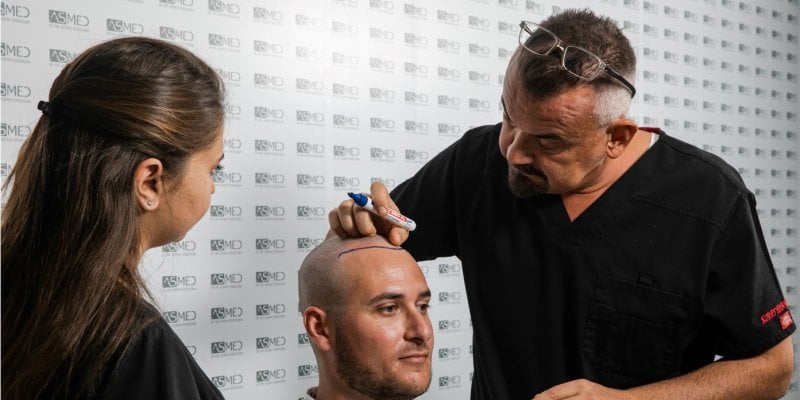
Hairline Lowering Surgery
Hairline lowering is a surgical procedure that involves shortening the brow and advancing the hairline. Surgical hairline lowering/advancement procedures can reduce an excessively high hairline in a single step. It is almost always done on women, and the high forehead can be shortened by up to 5 cm. When used in conjunction with hair grafting (in a subsequent step), it is possible to change the shape of the hairline, making it more oval or rounded by filling in the upper temporal/side regions, giving a more feminine appearance. Hairline lowering, also known as hairline advancement, is a successful procedure that produces subtle and natural-looking results. An incision is made along the front of the hairline, the hairline is brought forward, and excess forehead skin is removed before the incisions are sutured shut. The result is a fine line incision scar along the hairline that heals to be barely visible, if at all, and is designed so that hairs grow through it. This is a more complicated procedure than hair graft transplantation, but it can be quite effective and produce results. Most patients recover in two weeks, with sutures removed after one week.
Hair transplantation is one option for hairline lowering. Hairline lowering with hair transplant does not require any linear incisions along the hairline, but it does not typically achieve the same density as hairline advancement with only one hair transplant session. In most cases, patients will choose a second hair transplant session about a year after the first to achieve even greater density in the transplanted zone. When this second session is finished, patients usually have excellent density. The advantage of this technique is that there is no linear scar along the hairline. The disadvantage of hair transplant hairline advancement is that it takes about two years to see the final result because hair grows slowly and the transplanted grafts after the second session (which is usually performed 9-12 months after the first) will fall out.
Is Hairline Lowering Surgery Reliable?
This procedure is extremely safe when performed by a trained doctor. The risks and complications are uncommon and, in most cases, easily avoidable. There are no risks associated with a hairline lowering procedure because it is performed under local anesthesia and sedation
What Kind Of Post-Procedural Care Is Required For Hairline Lowering Surgery?
Following your procedure, some practical instructions and care must be followed in order to maximize its benefits. Avoidance of forceful facial rubbing, strong active movement, and some sporting activities are among the instructions. These suggestions will be explained to you by your doctor.
¿Cuántos injertos se requieren para bajar la línea frontal?
El número de injertos necesarios para bajar la línea del cabello depende de varios factores. Estos factores incluyen la densidad del cabello, el tamaño de la frente, la técnica quirúrgica y las expectativas del individuo. Una evaluación exhaustiva por parte de un médico antes de la cirugía es esencial para determinar la cantidad adecuada de injertos según las necesidades individuales. En general, el número de injertos puede oscilar entre 500 y 1500. Sin embargo, solo se puede lograr una evaluación precisa del recuento de injertos ideal mediante un examen personalizado y una consulta con un médico.
We care… The health of our patients is our top priority at Asmed. Our goal is to provide our patients with the highest level of medical care in order to ensure their safety and comfort in a fue expert clinic. We provide detailed information about the process to each patient based on their specific and unique requirements and needs as well as what to take care of for hair transplant recovery.
Book a hair transplant consultation from our expert medical team and learn more about hairline lowering surgery and all of your other options.